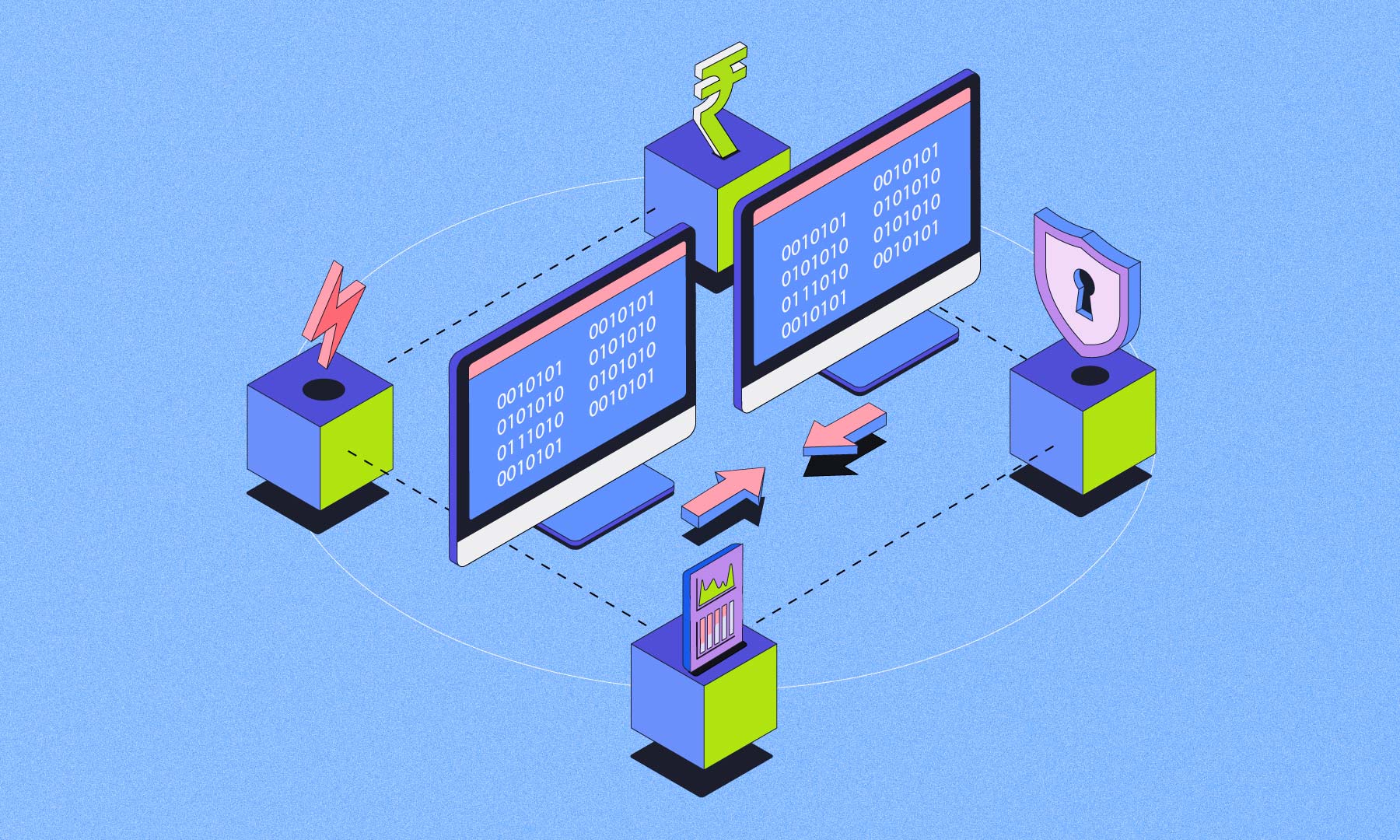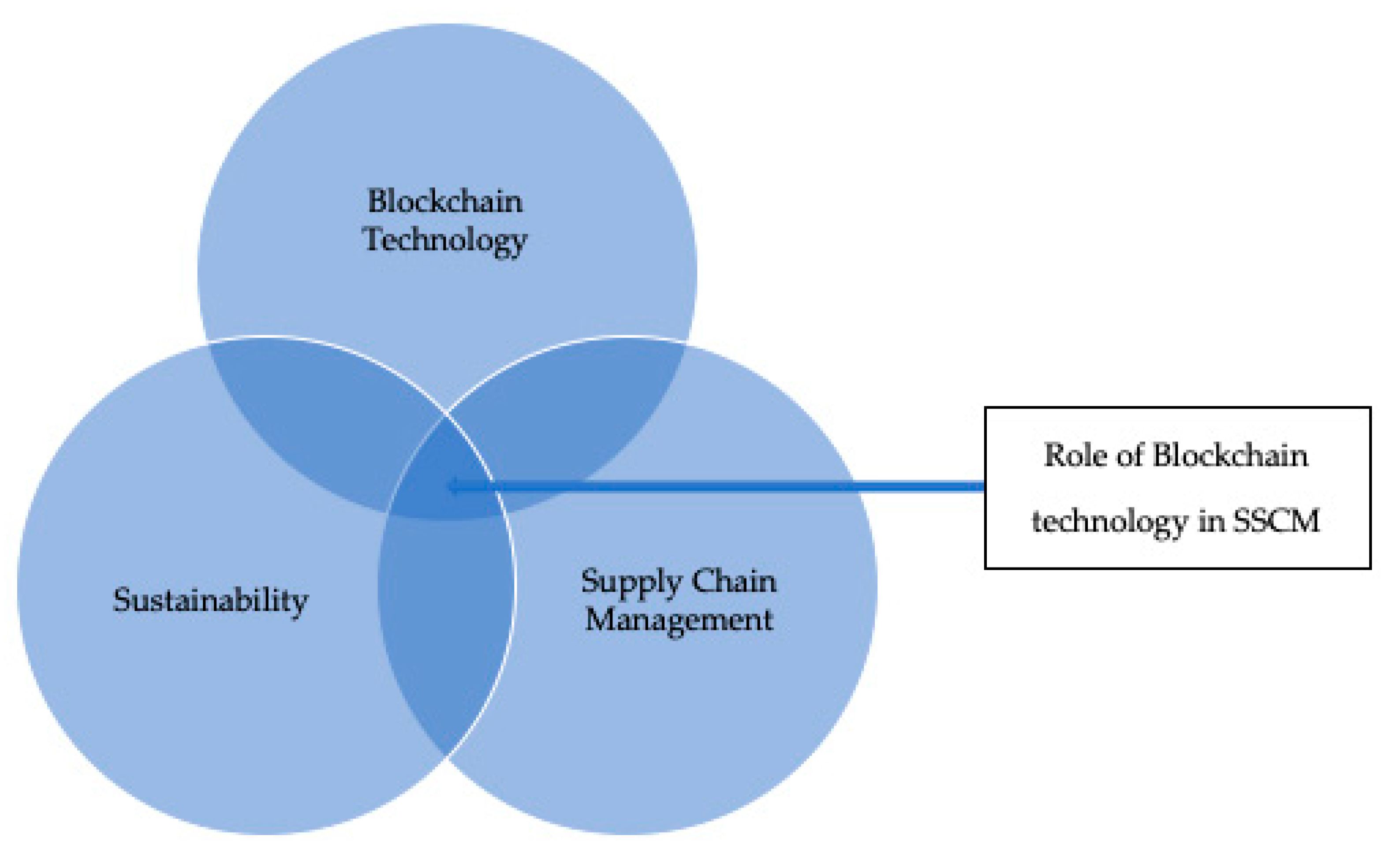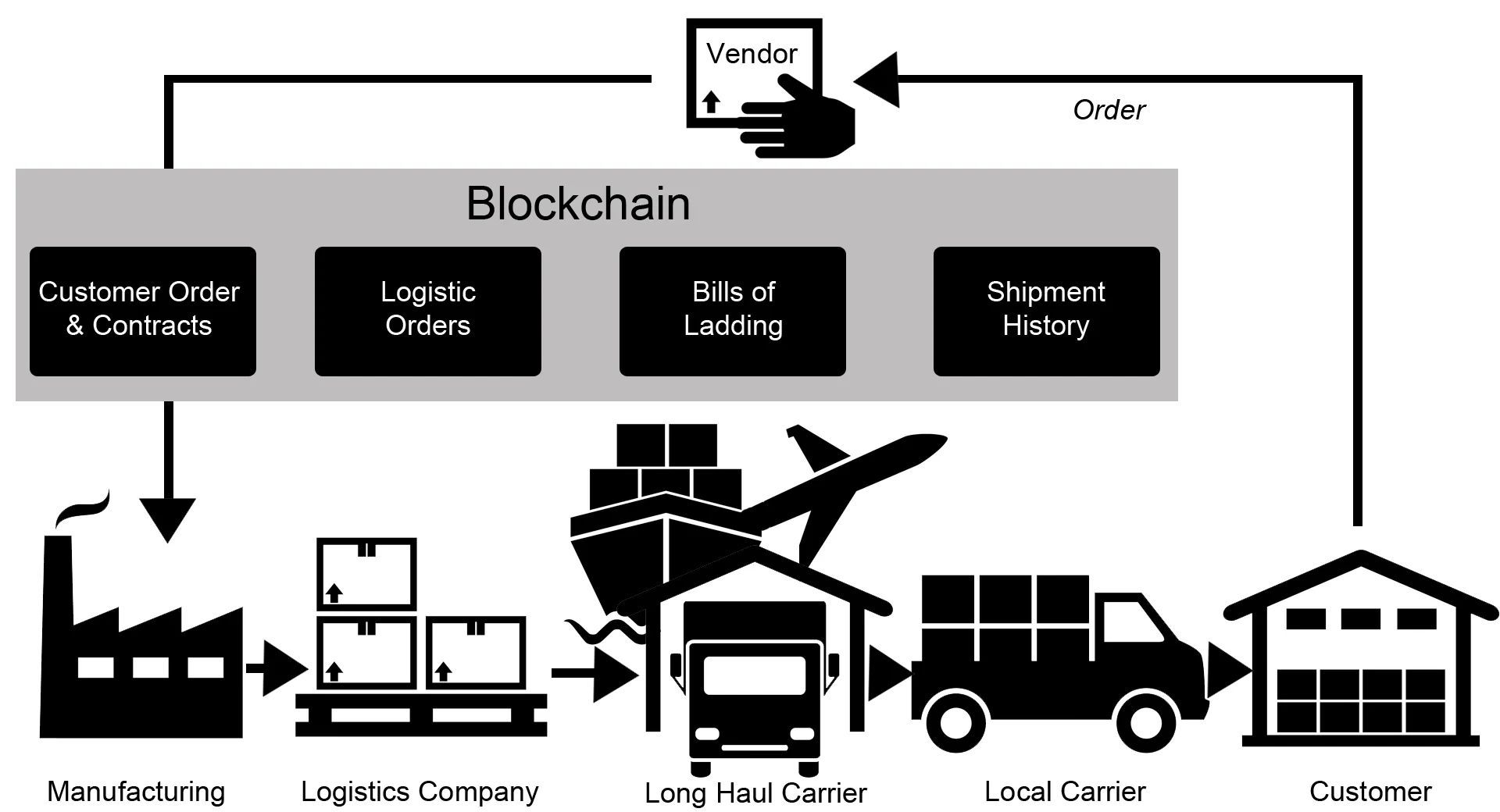Introduction
Welcome to the exciting world of blockchain technology! In recent years, blockchain has gained significant attention and is touted as a revolutionary technology with the potential to transform various industries.
But what exactly is blockchain? In simple terms, a blockchain is a decentralized, immutable, and transparent digital ledger that records transactions across multiple computers or nodes. Unlike traditional centralized systems, blockchain eliminates the need for intermediaries and offers increased security, trust, and efficiency.
One of the key characteristics that makes blockchain stand out is its immutability. Immutability refers to the inability to alter or tamper with data once it has been recorded on the blockchain. In a world where data manipulation and cyber threats are rampant, immutability plays a vital role in ensuring the integrity and authenticity of information.
In this article, we will delve deeper into the concept of immutability in blockchain, understand how it is achieved, explore the benefits and challenges associated with it, and examine real-world use cases where immutable blockchain technology is making a significant impact.
Immutability, combined with transparency and decentralization, forms the foundational pillars of blockchain technology. By removing the need for trust in intermediaries and establishing a consensus mechanism, blockchain provides a revolutionary solution to the age-old problem of data manipulation and ensures the verifiability and permanence of transactions.
Now, let’s explore how exactly blockchain achieves immutability and why it is of utmost importance in today’s digital landscape.
What is Blockchain?
Blockchain is a decentralized digital ledger that allows the storage and verification of transactions in a secure and transparent manner. It is built on a network of computers or nodes, where each node maintains a copy of the entire blockchain. This distributed nature eliminates the need for a central authority or intermediary, such as a bank or government, to validate and record transactions. Instead, the network participants collectively validate and update the blockchain.
A transaction on the blockchain consists of a digital record that represents the transfer of assets, such as cryptocurrencies or digital tokens, or other forms of data. Each transaction is encrypted, time-stamped, and added to a block. Once a block is filled with transactions, it is linked to the previous block, forming a chain of blocks, hence the name blockchain.
Blockchain technology provides several key features that set it apart from conventional systems:
- Decentralization: Traditional systems rely on a central authority to maintain and secure data. In contrast, blockchain is decentralized, meaning that no single entity has control over the network. This leads to enhanced security, as there is no single point of failure that can be exploited by malicious actors.
- Transparency: All transactions on the blockchain are transparent and visible to all network participants. This transparency promotes trust and accountability, as anyone can verify the legitimacy of transactions and ensure the integrity of the data.
- Security: Blockchain uses advanced cryptographic techniques to secure transactions and data. Each transaction is encrypted and linked to the previous transaction, creating a chain that is almost impossible to alter without the consensus of the network.
Blockchain technology was initially introduced as the underlying technology for cryptocurrencies like Bitcoin. However, its applications have expanded beyond digital currencies. It is now being adopted in various industries, including finance, supply chain management, healthcare, real estate, and more.
Now that we have a basic understanding of blockchain, let’s explore the concept of immutability and its importance in the blockchain ecosystem.
The Concept of Immutability in Blockchain
Immutability is a fundamental concept in blockchain technology, referring to the inability to modify, alter, or tamper with data once it is recorded on the blockchain. In other words, once a transaction or piece of information is added to the blockchain, it becomes permanent and cannot be changed retroactively.
This concept of immutability is crucial for maintaining the integrity and trustworthiness of the data stored on the blockchain. It ensures that the information recorded on the blockchain remains accurate, reliable, and transparent, without the risk of unauthorized modifications or data breaches.
Immutability is achieved through a combination of cryptographic techniques and consensus mechanisms. Let’s take a closer look at how these elements work together to create an immutable blockchain:
- Cryptographic Hash Functions: Every block on the blockchain includes a unique identifier called a cryptographic hash, which is created using a cryptographic hash function. A hash function takes an input (such as data from a transaction) and produces a fixed-size string of characters, which acts as a unique fingerprint for that data. Any change in the input data will result in a completely different hash value. This ensures that if someone tries to modify the contents of a block, the resulting hash will be different, alerting the network to the tampering attempt.
- Consensus Mechanisms: Blockchain networks rely on consensus mechanisms to validate and agree on the order of transactions. Consensus is achieved through a process in which network participants (nodes) reach an agreement on the validity of transactions and collectively verify them. This ensures that all nodes have the same version of the blockchain and that any attempt to tamper with data requires a majority or significant portion of the network’s computing power, making it impractical and nearly impossible.
By combining cryptographic hash functions and consensus mechanisms, blockchain technology ensures that once transactions are added to the blockchain, they are permanently recorded and cannot be altered without the majority consensus of the network.
The concept of immutability holds immense value in various industries. For instance, in financial systems, immutability ensures the traceability and authenticity of transactions, reducing the risk of fraud and enhancing auditability. In supply chain management, immutability allows for transparent and verifiable tracking of goods, providing a trustful record of their origin and journey. Additionally, immutability in healthcare can help maintain the integrity of patient records and enable secure sharing of sensitive medical data.
Now that we understand how immutability is achieved in blockchain, let’s explore its benefits and the challenges associated with maintaining it.
How Does Blockchain Achieve Immutability?
Blockchain achieves immutability through a combination of cryptographic hash functions, consensus mechanisms, and distributed ledger technology. Let’s explore how each of these elements contributes to the overall immutability of the blockchain:
- Cryptographic Hash Functions: In blockchain, every block contains a unique identifier called a cryptographic hash. This hash is generated by applying a cryptographic hash function to the data within the block. The hash function takes the data as an input and produces a fixed-size string of characters as the output. Even a minor change in the input data will result in a completely different hash value. This property ensures that any modification to the data within a block will be immediately detectable, as it would lead to a mismatch in the hash value. This protection against tampering ensures the immutability of the data stored on the blockchain.
- Consensus Mechanisms: Consensus mechanisms play a crucial role in achieving immutability in blockchain. They ensure that all network participants agree on the validity and order of transactions. Before a block can be added to the blockchain, a consensus algorithm is employed to ensure that it meets specific criteria defined by the network. This consensus is typically achieved through a proof-of-work (PoW) or proof-of-stake (PoS) mechanism. In a PoW system, participants compete to solve complex mathematical puzzles, and when one participant solves the puzzle, the block is added to the blockchain. In a PoS system, participants are chosen to create new blocks based on the number of cryptocurrency assets they hold. This decentralized consensus process ensures that any attempt to modify the blockchain requires a significant amount of computational power or a large stake in the cryptocurrency, making it economically and technically infeasible.
- Distributed Ledger Technology: The distributed ledger technology used in blockchain ensures that the blockchain is replicated and maintained across multiple nodes in the network. Each node holds a copy of the entire blockchain, and any changes made to the blockchain must be validated and agreed upon by the majority of the nodes. This distributed nature of the blockchain makes it highly resilient to tampering, as an attacker would need to compromise a majority of the network’s nodes simultaneously to alter the data. Additionally, the replication of the blockchain across multiple nodes ensures that even if one node becomes compromised, the rest of the network can continue to validate and maintain the integrity of the data.
Together, these elements – cryptographic hash functions, consensus mechanisms, and distributed ledger technology – ensure the immutability of the blockchain. Once data is recorded on the blockchain and added to a block, it becomes virtually impossible to alter or tamper with it without the consensus of the network. This immutability provides a high level of security, integrity, and trust to the data stored on the blockchain.
Now that we have discussed how blockchain achieves immutability, let’s explore the benefits that this characteristic brings to various industries and the challenges associated with maintaining immutability.
Cryptographic Hash Functions
Cryptographic hash functions play a crucial role in achieving immutability in blockchain. They are mathematical algorithms that take an input (data) and generate a fixed-size, unique output called a hash value. Let’s explore how cryptographic hash functions contribute to the immutability of the blockchain:
Data Integrity: Cryptographic hash functions ensure data integrity by producing a digital fingerprint of the input data. Even a small change in the input data will result in a significantly different hash value. This property allows blockchain networks to verify the integrity of data by comparing the hash value of the current data with the hash value stored in the previous block. Any tampering or alteration of the data will immediately be detected as it will lead to a mismatch in the hash values.
Irreversibility: Cryptographic hash functions are designed to be one-way functions, meaning it is computationally infeasible to reverse-engineer the input data from the hash value. This property ensures that the original input data cannot be derived from the hash value, further protecting the immutability of the data recorded on the blockchain.
Collision Resistance: Cryptographic hash functions are designed to have a low probability of producing the same hash value for different input data. This property, known as collision resistance, prevents fraudulent activities such as generating two different sets of data with the same hash value. A high-level collision resistance ensures that the data stored on the blockchain remains unique, enhancing the security and reliability of the system.
Efficiency and Speed: Cryptographic hash functions are computationally efficient and can generate hash values quickly, even for large amounts of data. This efficiency is essential in blockchain networks where numerous transactions need to be processed and validated in a timely manner. Using hash functions allows for efficient verification and validation of data, reducing the computational overhead for the network participants.
Cryptographic hash functions, such as SHA-256 (Secure Hash Algorithm 256-bit), MD5 (Message Digest Algorithm 5), and Keccak, are widely used in blockchain technology to achieve data integrity, irreversibility, collision resistance, and efficiency.
The integration of cryptographic hash functions within blockchain networks ensures the immutability of data by detecting any unauthorized modifications or alterations to the data. It enhances the security, transparency, and trustworthiness of the blockchain system by providing a reliable and efficient means of data verification.
Now that we understand the role of cryptographic hash functions in achieving immutability, let’s explore other factors such as consensus mechanisms that contribute to maintaining the integrity of the blockchain.
Consensus Mechanisms
Consensus mechanisms play a vital role in achieving immutability in blockchain by ensuring that all network participants agree on the validity and order of transactions. These mechanisms enable decentralized decision-making and secure the integrity of the blockchain. Let’s explore two commonly used consensus mechanisms and their contributions to maintaining the immutability of the blockchain:
Proof of Work (PoW): PoW is the original consensus mechanism introduced by Satoshi Nakamoto in the Bitcoin whitepaper. In a PoW system, participants, known as miners, compete to solve complex mathematical puzzles. The first miner to solve the puzzle gets the right to add a new block to the blockchain and is rewarded with cryptocurrency. The difficulty of the puzzle is adjusted so that on average, a new block is added every 10 minutes. This mechanism ensures that a significant amount of computational work is required to validate and secure the blockchain. It also makes it economically infeasible to tamper with the blockchain, as an attacker would need to control more than 50% of the network’s computational power, known as a 51% attack. The decentralized nature of PoW consensus ensures the immutability of the blockchain by preventing any single entity from controlling the majority of the network’s computing power.
Proof of Stake (PoS): PoS is an alternative consensus mechanism that aims to address some of the energy consumption issues associated with PoW. In a PoS system, participants, referred to as validators, are chosen to create new blocks based on the number of cryptocurrency assets they hold and are willing to “stake” as collateral. The selection process is typically random or based on a combination of factors like the participant’s stake, age of the coins, or reputation in the network. Validators are responsible for validating transactions and creating new blocks. The probability of being chosen as a validator is proportional to the number of coins held or staked. PoS consensus ensures the immutability of the blockchain by requiring participants to have a significant stake in the network’s cryptocurrency, discouraging malicious behavior. If a validator attempts to modify the blockchain, they risk losing their stake, making it economically disadvantageous to act against the network’s best interests.
Both PoW and PoS consensus mechanisms contribute to the immutability of the blockchain by introducing a decentralized decision-making process. They prevent any single entity from controlling the blockchain, making it difficult to manipulate or tamper with the data. The consensus mechanisms, combined with cryptographic hash functions and the distributed ledger, ensure the integrity and immutability of the blockchain.
It’s important to note that there are several other consensus mechanisms available, such as Delegated Proof of Stake (DPoS), Practical Byzantine Fault Tolerance (PBFT), and more. Each consensus mechanism has its own unique approach to achieving immutability and provides various benefits and trade-offs.
Now that we have explored the role of consensus mechanisms in achieving immutability, let’s move on to the next factor, distributed ledger technology, and its contributions to maintaining the integrity of the blockchain.
Distributed Ledger Technology
Distributed Ledger Technology (DLT) is a fundamental component of blockchain systems and plays a crucial role in achieving immutability. DLT ensures that the blockchain is replicated and maintained across multiple nodes in a decentralized network rather than being stored in a single central authority. Let’s explore how DLT contributes to maintaining the integrity and immutability of the blockchain:
Data Replication: In a distributed ledger, each participating node maintains a copy of the entire blockchain. When a new transaction or block is added, it is shared and replicated across the network. This replication ensures that even if a few nodes become compromised or go offline, the data remains intact and accessible through other nodes. The decentralized nature of DLT provides resilience and prevents a single point of failure, protecting against data loss or tampering.
Consensus Verification: Distributed ledger technology facilitates the consensus verification process in blockchain systems. When a new transaction is proposed, it is broadcasted to the network, and each participating node independently verifies the transaction’s validity through the consensus mechanism. Once the majority of the nodes agree on the transaction’s validity, it is added to the blockchain. The distributed nature of the ledger ensures that malicious nodes cannot manipulate the consensus process, as they would need to control a significant portion of the network’s nodes, making it economically and technically infeasible.
Security and Privacy: DLT enhances security and privacy in blockchain systems. The distributed nature of the ledger makes it difficult for hackers or malicious actors to alter or tamper with data stored on the blockchain. Additionally, cryptography techniques, such as public-key cryptography, are often employed to secure the data and ensure privacy. The use of digital signatures allows participants to verify the authenticity and integrity of transactions without revealing sensitive information. DLT provides a secure and private environment for data storage and transfer.
Transparency and Auditability: Despite the decentralized nature of DLT, blockchain systems offer transparency and auditability. Participants can access and validate the entire transaction history stored on the blockchain. The immutability of the blockchain ensures that once a transaction is recorded, it cannot be erased or modified. This transparency and auditability promote trust and accountability in various sectors, such as supply chain management, finance, and healthcare, where stakeholders can verify the origin, ownership, and movement of assets or data.
By leveraging distributed ledger technology, blockchain systems achieve immutability, enhancing the integrity, security, privacy, transparency, and auditability of the data and transactions stored on the blockchain. The distributed nature of the ledger, combined with the consensus mechanisms and cryptographic techniques, preserves the immutability of the blockchain, making it a reliable and trustworthy technology.
Now that we have explored the role of distributed ledger technology in achieving immutability, let’s move on to the benefits and challenges associated with this essential characteristic of blockchain.
Benefits of Immutability in Blockchain
The immutability of blockchain technology brings several significant benefits to various industries. Here are some key advantages of immutability in blockchain:
Data Integrity: Immutability ensures that once data is recorded on the blockchain, it cannot be altered or tampered with retroactively. This ensures the integrity and authenticity of the recorded information, making blockchain a reliable source of truth. It eliminates the risk of data manipulation, fraud, and unauthorized alterations, providing a high level of data integrity and trustworthiness.
Enhanced Security: By design, blockchain is resistant to data tampering and fraud. The cryptographic hash functions and consensus mechanisms used in blockchain protect against unauthorized modifications. Once a transaction is verified and added to the blockchain, it becomes virtually impossible to alter or manipulate without the consensus of the network. This immutability feature enhances the security of sensitive data and transactions, reducing the risk of cyber-attacks and data breaches.
Transparency and Auditability: Immutability promotes transparency and auditability of transactions and data stored on the blockchain. Every transaction recorded on the blockchain is transparent and visible to all network participants. This transparency enables stakeholders to verify and validate the origin, ownership, and movement of assets or data. Additionally, the immutability of the blockchain allows for easy auditing and reconciliation of past transactions, enhancing accountability and trust.
Trust and Accountability: Immutability is a key factor in building trust and accountability in transactions and business interactions. The ability to prove the validity and integrity of data on the blockchain eliminates the reliance on trust in centralized intermediaries. Participants can have confidence in the accuracy, reliability, and immutability of the recorded information. This trust and accountability are particularly valuable in industries like finance, supply chain management, healthcare, and legal, where the verifiability of transactions and documentation is crucial.
Immutable Smart Contracts: Smart contracts, which are self-executing contracts with predefined conditions, are an integral part of blockchain technology. Immutability ensures that once a smart contract is deployed on the blockchain, its code and terms cannot be modified. This feature provides assurance that the conditions specified in the smart contract will be executed as intended, without the risk of interference or manipulation.
Reduced Costs and Inefficiencies: Immutability in blockchain eliminates the need for intermediaries, paperwork, and manual reconciliation processes. This reduces costs and inefficiencies associated with trust-building, record-keeping, auditing, and dispute resolution. By automating and streamlining processes, blockchain technology with immutability improves efficiency and reduces administrative burdens.
The benefits of immutability in blockchain extend across industries, revolutionizing processes, and providing new opportunities for innovation and trust-building. From ensuring data integrity to enhancing security, transparency, and accountability, immutability is a cornerstone characteristic of blockchain technology.
Now that we have explored the benefits, let’s shift our focus to the challenges and limitations associated with maintaining immutability in blockchain.
Challenges and Limitations of Immutability in Blockchain
While the immutability of blockchain brings numerous benefits, there are several challenges and limitations that need to be considered. Here are some key challenges and limitations associated with maintaining immutability in blockchain:
Error Correction: Once data is recorded on the blockchain, it cannot be easily modified or corrected. Human errors or system glitches can result in incorrect or invalid data being permanently stored on the blockchain. While some blockchain platforms have mechanisms for data rectification, such as adding new transactions to reverse or correct errors, these solutions are often complex and require consensus among network participants.
Regulatory Compliance: Immutability can pose challenges regarding regulatory compliance, particularly in industries that require the right to be forgotten or the ability to remove certain data. Regulations like the General Data Protection Regulation (GDPR) require the ability to erase personal data upon request. The inherent immutability of blockchain technology makes compliance with such regulations complex, as it contradicts the concept of permanent and unchangeable data storage.
Privacy: While transactions on the blockchain are pseudonymous, meaning they are associated with a unique identifier rather than personal information, the transparency of the blockchain can still pose challenges to privacy. Although the data itself is secure due to cryptographic techniques, the visibility of transactions can potentially expose sensitive information, if not properly managed. Privacy-enhancing technologies, such as zero-knowledge proofs, are being developed to address this limitation.
Scaling Issues: The immutability of blockchain introduces challenges in terms of scalability. As the size of the blockchain grows, it becomes increasingly challenging to maintain and replicate data across a vast network of nodes. This can lead to longer processing times and increased storage requirements. While various solutions, such as off-chain protocols and layer-2 scaling, are being explored, scalability remains a significant concern for achieving widespread adoption of blockchain technology.
Energy Consumption: Consensus mechanisms like Proof of Work (PoW) require significant computational power, leading to high energy consumption. This energy-intensive nature of PoW-based blockchains has raised concerns regarding the long-term sustainability and environmental impact of blockchain technology. Efforts are being made to develop more energy-efficient consensus mechanisms, such as Proof of Stake (PoS) and other alternative algorithms.
Legal Challenges: The immutability of blockchain data poses legal challenges in terms of liability, accountability, and dispute resolution. In traditional systems, intermediaries such as banks or legal entities play a role in resolving disputes and ensuring legal compliance. However, in a decentralized and immutable blockchain environment, resolving disputes and enforcing legal actions becomes more complex, as well as determining liability for issues arising from the use of blockchain technology.
While immutability remains one of the core strengths of blockchain technology, it is essential to recognize and address these challenges and limitations to ensure its practical and sustainable implementation in various industries.
Now that we have discussed the challenges and limitations, let’s explore some real-world use cases where the immutability in blockchain is making a significant impact.
Real-World Use Cases of Immutable Blockchain
The immutability of blockchain technology has found a wide range of applications across different industries. Here are some real-world use cases where the immutability of blockchain is making a significant impact:
Supply Chain Management: Blockchain’s immutability and transparency are transforming supply chain management by providing an immutable and trustworthy record of the movement of goods. With blockchain, stakeholders can track and verify the authenticity and origin of products at each stage of the supply chain. This ensures transparency, reduces fraud, and helps eliminate counterfeit products from entering the market.
Finance and Banking: Financial institutions are leveraging blockchain’s immutability to enhance security and streamline processes. Blockchain enables immutable and tamper-proof record-keeping for transactions, reducing the risk of fraud and ensuring the transparency of financial data. It also facilitates faster and more efficient cross-border transactions by minimizing intermediaries and eliminating the need for reconciliation.
Healthcare: The healthcare industry is utilizing blockchain’s immutability to securely store and share patients’ medical records. Blockchain ensures the integrity and privacy of sensitive patient data, reducing the risk of tampering and unauthorized access. It also enables efficient and secure sharing of medical records across different healthcare providers, enhancing interoperability and improving patient care.
Public Administration: Governments are exploring the use of immutable blockchain technology for public administration services. Land registry systems built on blockchain ensure transparency, eliminate land disputes, and prevent fraudulent property sales. Voting systems based on blockchain provide secure and verifiable voting records, ensuring transparency and preventing voter fraud.
Intellectual Property: Blockchain’s immutability is being leveraged to protect intellectual property rights. By storing digital certificates of ownership or copyright registrations on the blockchain, artists, musicians, and creators can prove their ownership of original works without relying on intermediaries. This helps combat plagiarism, copyright infringement, and unauthorized use of intellectual property.
Legal Contracts: Blockchain technology is being utilized to create immutable smart contracts. These self-executing contracts automatically execute predefined terms and conditions when specific conditions are met. The immutability of blockchain ensures that the terms of the contract cannot be altered, providing security and trust in various sectors, such as real estate, supply chain, and financial agreements.
These real-world use cases demonstrate how the immutability of blockchain technology provides enhanced security, transparency, and integrity to various industries. From supply chain management to finance, healthcare, public administration, intellectual property, and legal contracts, blockchain’s immutability is revolutionizing processes, improving efficiency, and creating new opportunities for innovation and trust-building.
Now that we have explored real-world use cases, let’s wrap up the article, summarizing the key points discussed.
Conclusion
Immutability is a fundamental characteristic of blockchain technology that ensures the integrity, security, and trustworthiness of data stored on the blockchain. Through cryptographic hash functions, consensus mechanisms, and distributed ledger technology, blockchain achieves immutability by making data tamper-proof and irreversible. This immutability brings forth several benefits such as data integrity, enhanced security, transparency, trust, and reduced costs. Industries across the globe are adopting blockchain technology to revolutionize various sectors, including supply chain management, finance, healthcare, public administration, intellectual property, and legal contracts.
However, immutability in blockchain also faces challenges and limitations. Error correction, regulatory compliance, privacy concerns, scaling issues, energy consumption, and legal challenges are some of the key considerations that need to be addressed. As blockchain technology evolves, efforts are being made to find solutions to these challenges, such as optimized consensus mechanisms, privacy-enhancing techniques, and innovative scalability solutions.
Overall, the immutability of blockchain technology is reshaping industries and opening new possibilities for innovation, trust-building, and efficient processes. It provides a reliable and secure means of recording and verifying transactions, ensuring transparency and integrity in data management. As blockchain continues to mature and find wider adoption, the immutability it offers will play a crucial role in creating a more transparent, secure, and efficient digital future.

























